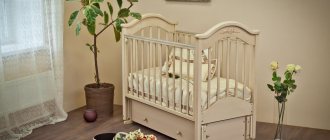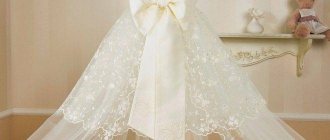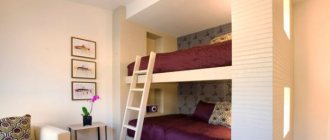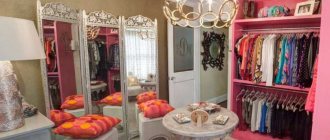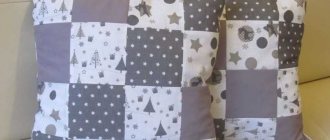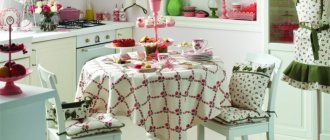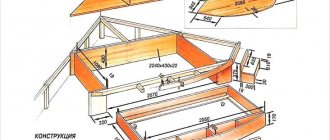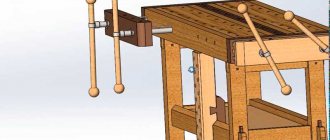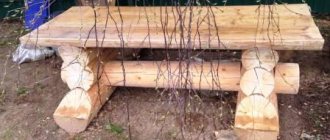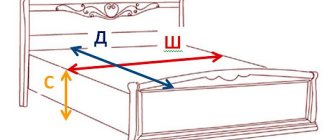Sides are flat soft products that are placed around the perimeter of the crib to protect the baby from impacts. They are also called children's bumpers. This protection is intended for newborns, one-year-olds and children under 3 years of age. The pillow sides can also be used in the future, for example, as toys. Parents have a wide choice of protective barriers for children. There are 3- and 4-sided options, low and high models. If the sides are small, the child will be constantly in sight, which will allow the mother to remain calm about his condition. Tall options are useful for older children, as they are restless and more independent. Those who want to save money or test their sewing skills can make a children's bumper themselves. High quality materials are available for sale. You can also find many interesting implementation options.
Purpose of the sides
Sides are placed on all sides of the bed. Their main task is to promote the safety of the baby and protect his body from diseases. Bumpers protect the child from falling out of the bed, hitting its elements and drafts. If there is no place to place the bed except next to the window, then the sides must be used. Curious children also love to stick their arms and legs between the sticks. This is another reason for using special devices. The additional significance of this protection is to facilitate falling asleep and comfortable sleep, since nothing will distract the baby. The bumpers perform a developmental function. Multi-colored drawings in the form of people, animals and various objects will become a subject of study for the baby. The child will soon begin to recognize these objects and details in the world around him. He will learn to concentrate. It is important that the picture does not irritate him. Removable parts on the protective pads will develop hand motor skills.
Why do we need bumpers for a crib?
There have been endless debates regarding the advisability of using protective bumpers for newborn cribs from the moment they appeared to this day. The same discussions take place regarding other children's accessories: pacifiers, walkers, swings for motion sickness and others.
The need for protection for a baby's bed should be determined by the parents of each baby, because all children are different. There are calm children who practically do not move in their sleep and do not wake up from a collision with the hard bars of a wooden bed.
Such a baby may not need bumpers at all, even when he gets up.
Other children demonstrate activity at an early age, so parents decide to purchase protection in order to protect their baby from injury and ensure a peaceful existence.
IMPORTANT. Protective bumpers for a newborn's crib should not be considered a panacea for injuries or an ideal baby protector. The attention of parents or other adults should always accompany the child during periods of activity and (if possible) sleep.
Among the obvious advantages of protective sides it is worth noting:
- Preventing the child from being injured from contact with hard parts of the crib while awake and sleeping.
- Preventing children's arms or legs from getting into the space between the bars of the crib.
- Protecting your baby from drafts during ventilation or just cold air in the off-season.
- Protection from sunlight if the crib is located near a window. In this case, high protection is required.
- Creating a cozy and comfortable atmosphere for growth and development.
- Decorating the room and maintaining a uniform style of the room.
Advantages and disadvantages of hand-sewn borders
Self-made bumpers are more versatile. In the case of manual production, you can ideally calculate how much material is needed for a specific bed. Unlike store-bought products, which often have a specific unpleasant odor, homemade barriers are created from the right material. The uniqueness of the bumper as an educational toy also deserves attention. In addition, they are multifunctional. When the baby grows up and “changes” the bed to a larger one, the pillows will decorate the sofa or play area. They can be crafted with this in mind. The side can be made into a full-fledged decorative detail, made in any style you like. It is selected taking into account the gender and age of the child. The disadvantages, as in the case of factory products, are the reduction of space inside the bed and the feeling of being “compressed”. It is worth noting the complexity of the work process and high time costs, which can be avoided by purchasing a ready-made bumper. In addition, it is more difficult to create an interesting design on homemade pillows.
What fabric to sew from?
The quality of soft fencing pads depends on the fabric chosen. Its main characteristics are density and naturalness. It is necessary to choose “breathable” materials. You need to make sure that the fabric is environmentally friendly and hypoallergenic. Natural fibers are better than even the highest quality synthetic fabric, because it is poorly breathable and can cause an allergic reaction. You should choose among canvases made from cotton. Suitable materials are chintz, calico, linen, flannel, flannel. Before cutting the fabric, you will need to wash and iron it. When choosing a material, you should immediately determine whether such a drawing is suitable or not, whether it will be interesting to the child. Density for protection from the cold and strength are important for fabrics, because small children love to touch and explore all the objects around them.
How to choose fabric for crib bumpers
To make not only a beautiful, but practical set, you need to pay special attention to the choice of material for forming the product. A few nuances that may influence your choice:
- The fabric should be pleasant to the touch.
- It is advisable to choose material from natural fibers.
- The color scheme is only pastel, so as not to burden the baby’s psyche.
- Textiles must be completely hypoallergenic.
What kind of fabric can be?
The ideal option would be flannel, chintz or flannel. Each type of textile presented is easy to care for. No amount of washing or ironing will spoil the appearance and texture of the material.
Filler selection
In this case, preference should be given to synthetics. Previously, natural down was considered a good option. Nowadays these are polyester, hollcon, periotek, holofiber, synthetic winterizer and foam rubber. The last two materials are more traditional. All of these options make sewing and washing easier. The best option is synthetic winterizer. In products, it is additionally stitched around the entire perimeter to avoid the appearance of lumps. Such pillows wash well and do not lose their properties afterwards. It tolerates washing and foam rubber well. However, this is not the safest material for children, despite its ability to hold temperature well. Holofiber is also worth noting: with the load inherent to the sides, it will not lose its original shape over many years, in addition, it is hypoallergenic. However, it is a relatively expensive material.
Types of filler for baby bed sides
Today, a large number of fillers have been developed that have their own advantages.
Namely:
- Foam rubber is a microfiller that requires special conditions.
This is, first of all, meticulous and high-quality drying. This base has the ability to retain water well, which promotes the formation of microorganisms inside.
- Sintepon is the best microfiller.
This material is not expensive, simple, quite flexible, washes well and dries instantly. Its qualities prevent the formation of fungus.
- Holofiber is the latest filler, superior in quality to padding polyester.
It is absolutely non-toxic, does not retain moisture, and dries instantly without changing its original configuration. Due to the spiral texture, the filler is very wear-resistant.
- Periotec is an innovative fiber.
Its main advantage is hypoallergenicity. This is a very flexible artificial material that washes well.
- Hallcon is an artificial filler.
Has fantastic heat resistant features. Absolutely non-allergenic, flexible and wear-resistant.
- Polyester is a hollow fiber.
Has anti-allergenic qualities. Does not lose its original configuration. Does not absorb water or odor.
Types of sides
There is a wide variety depending on the characteristics. Depending on the type of construction, there are removable and non-removable sides. The first subtype is much more common and is characterized by a greater choice of placement methods. Fixed ones are either solid or with openings. This type of protection will completely protect the child from the possibility of injury. Products can be intended for boys or girls. In the first case, they are made in cool tones or yellow. For girls, any color is suitable, except dark, primarily pink and pastel shades. According to the method of fastening, there are 2 types of protective pads: with ties and with Velcro. In the first version, the fastening elements are located at the edges of the product. In the second case, the clasp is hidden, so the baby will not pay much attention to it. The sides of the crib also differ in height (high, low). There are bombon models with soft squares and a braid, which is easy to make yourself.
How to calculate the number of products and their sizes
There are recommendations regarding determining the parameter for 1 element depending on the type of soft fencing structure. This makes calculations and presentations easier for beginning needlewomen.
How to make calculations and make a choice:
- If the fence consists of pillows, then you need to make 2 pillows on the headboard and a symmetrical part of the bed. There can be 4-5 pillows on the sides.
- Classic sides consist of only 4 parts, so it is important to know only the length and width of the sides of the crib.
- If you make shaped products, then focus on the quantity and parameters on pillows.
Much depends on the shape and dimensions of the sleeping place and crib. Therefore, you first need to take measurements, and only then ask the price for the quantity and size of each element of the soft furnishings. Take measurements from the crib.
You need to write down the height, length and width parameters of each piece.
Step-by-step master class
The main stages of making a side for a crib with your own hands:
- Calculation of the number of products, their sizes.
- Preparation of tools and materials.
- Cut out the fabrics.
- Sewing.
- Decoration.
First you need to decide on the role of the protective partition. Preferred height is key. The same applies to the configuration: solid around the entire perimeter or on 3 sides, so that the child can always be seen from one side (for example, from the side of the bed where the mother sleeps). The number of elements is also important in order to provide all the amenities for the baby. To create the product you will need fabric and filler, as well as all the tools used for sewing. The fabric material is carefully prepared: ironed and, if necessary, washed beforehand. Next, patterns are made. They are then transferred to the material. But if you have enough experience, the required dimensions are immediately applied to the fabric. After this, the sides, ties and decorative elements are sewn. The process will be much like making pillows. At the end everything comes together - the product is ready.
How to calculate the number of products and their sizes
It is necessary to determine the optimal height of the side. For babies under 4 months they are made low. This is to ensure that parents have enough visibility. For children struggling to stand up, more secure tall options are needed. With a bed length of 120 cm and a width of 60, the total length will be 360 cm. The length of the protection is also calculated depending on the location. This figure for U-shaped sides is usually 190 cm. The height of the bumper is a matter of priorities. It is recommended to choose a lower side so that the baby is visible and can grab the bars when he gets up. A height of 30 cm can be considered optimal. The side is made so that the baby cannot stand on it. As for the number of products, the classic protection consists of 4 parts: 2 with a height of 30-55 cm and a length (width) of 60 cm, 2 of the same height and a length (width) of 120 cm. Thus, a barrier of individual pillows around the entire perimeter is high 30 cm includes 12 elements.
The whole thing will take up to 3.6 m of fabric, but it’s better to take more for decoration and the ability to correct mistakes!
Required materials and tools
First of all, you will need fabric and filler. It is preferable to choose natural canvas. Among the fillings, it is better to choose synthetic roll filling. It is hypoallergenic and washable without loss of properties. You will need a sewing machine. However, if you have the skills and patience, you can sew the borders by hand. You will also need such devices and tools as tailor's pins, a long ruler or “centimeter”, a needle, and scissors. For cutting, you should get a marker or pencil, as well as soap or chalk - one of your choice. You need paper to create patterns, but with enough experience you can do this directly on the fabric. You also need threads in the same color as the main fabric. Other necessary accessories: zippers or buttons, ribbons, braid, decorative elements (felt appliqués, lace, etc.).
Preparing and cutting fabric
You need a clean, ironed cloth. Patterns are made in advance, and then they are carefully transferred to the fabric. Leave 1-1.5 cm for the seams. For bumpers with covers, you will need to cut two sets of fabric - a lining and one for the covers. If rolled padding polyester is chosen as the filler, then cutting is carried out in the same way. The dimensions of the samples, however, are reduced by 1.5-2 cm (depending on the thickness of the material) so that the filler fits into the case. If the sides are made in the form of pillows, cutting will not be necessary. You just need to cut out squares of a certain size. For an ordinary rectangular crib you need twelve pillows measuring 30x30 cm. Pillows in the form of houses can be made according to the same pattern. The size is selected depending on the various parameters of the crib. The dimensions of the stock are carefully measured so that necessary adjustments can be made if anything happens.
Sewing process
These works include 3 processes:
- Sewing the sides themselves.
- Creating ties.
- Sewing decorative covers.
The work begins by folding the lining fabric from the outside inward and sewing the cover together. A hole is left for the filler. The cover is then turned inside out and the required material is inserted into it. The hole is carefully sewn up, ideally this is done by hand and with a hidden seam. This procedure is carried out for each security element. The ties are sewn using 2 methods - regular or with Velcro. Ribbons and braid can serve as simple ties. Basic material will also work. The number of ties and their sizes is an individual matter. As a rule, two dozen fasteners are required: 4 for the headboard and footboard, 6 for both sides. It is recommended to sew more fasteners for a more secure fit. If you are creating pillow sides, then at least 2 ties are needed for each. In the case of decorative covers, you need to mark in advance the location of the fasteners and baste them.
How to sew a frill into a border
To do this you will need to know some nuances. Firstly, for the frill you will need a strip of material with a width of 7 to 15 cm. The length can be changed if necessary. It should be at least one and a half times larger than the part. In this case, the folds will not be very voluminous. If the length of the frill exceeds that of the part by more than 2 times, the pleats will be fluffy. Using a sewing machine, the frill can be easily assembled. The ruffle will need to be assembled by hand. For this, a regular needle is used. First, a needle and thread of the required length are taken, then the material is laid out like an accordion and pierced. After this, all that remains is to distribute the pleating along the entire length of the thread. For instant basting, you will need to place the frill between two layers of material. When making the sides, it is better to make a frill for all sides of the crib and connect them at the corners.
Instructions for sewing children's bumpers - cat pillows
Pillow bumpers are suitable for quiet babies who are not inclined to crawl between the bars of the bed and climb out beyond its boundaries.
Pillow bolsters are especially popular among inquisitive sanguine children who love various educational games.
The complexity of sewing cat pillows is low - even novice seamstresses can handle them. It will take 3 hours to work.
The following are instructions for one pillow. The sides are combined from several elements, and the visual design can be anything - animals, geometric shapes, favorite characters from fairy tales and animated series.
For the finished product you need to prepare:
- cotton fabric - two colored bases and a small piece of a different shade for a bow;
- pillow filler – holofiber;
- suitable threads (required color and density);
- meter of satin or rep ribbon (width from 1.2 cm to two and a half centimeters).
Tools:
- scissors for cutting and other operations;
- pin needles;
- simple needles;
- sewing machine;
- a pencil for marks or chalk (you can also use modern fabric markers);
- ruler.
The number of elements and the cutting pattern should be determined based on the crib standard: the length of a standard product is 120 cm, the width of the crib is usually 60 centimeters, the height of the sides is usually 55 centimeters. In total, fabrics of different colors will be needed 55 by 110 cm.
A similar amount of foam rubber or other filler should be prepared for sewing.
Operating procedure:
Step 1. The pattern of the front part of the cat (top and bottom - different shades) is transferred to woven fabric. The image contains the required dimensions of the base - the cat itself, cheeks and ears. The top part is cut taking into account the fold. Add 1 centimeter to the seam. The lower part of the base for the cat measures 34 centimeters * 17 cm (dimensions are given taking into account allowances).
Step 2. Using a special disappearing fabric marker, draw eyes, mustache and muzzle. You can also use chalk or a piece of dry soap for this. It is important to ensure that all parts are placed proportionally and symmetrically. At the final stage, you need to sew the bottom strip to the top base and iron the resulting seams.
Step 3. Sew the felt parts to the base.
Step 4. Elements of the muzzle are embroidered. To make the eyes, mustache and muzzle bright, this is done several times. Next, 2 ribbons 50 centimeters long need to be folded in half and attached to the fabric. To do this, use regular pins.
Step 5. The back element of the pillow, identical to the front, is cut out of fabric, then the halves are sewn together. There is a place at the bottom where the filler will be placed. The length of the slot is from ten to eleven cm. The corners need to be processed from the inside - when the pillow is turned right side out, ironed and filled with holofiber, they should not puff up and spoil the appearance of the product.
Step 6. The place for the filler is sutured.
Step 7. A bow is cut from printed fabric. It requires: a strip of 15.5 centimeters by 14.5 cm and a square of 4.5 cm by 4.5 cm. Next, the rectangular part is folded in half and stitched on three sides.
In the middle of the future bow, an incision is carefully made along the top of the fabric. Next, the part is turned inside out through the hole. It is ironed and sewn tightly.
After the base of the bow is ready, the square is folded in half and then doubled again. The result is a strip that needs to be sewn exactly in the middle to make a bow.
Now you can cut and sew other pillows with soft filling into the kit. In order for the cat to serve as a soft toy in the future, the ribbons are cut off from it.
Methods for decorating the finished product
For this purpose, frills, appliqués, large buttons, bows, ribbons, etc. are intended. If the pillows are decorated along the entire length with lace or frills, then they need to be basted or sewn into the main seams. The decor can also be located on the front side of the case. The bumper and the frame next to it are also decorated with applications, patterns and designs. For safety reasons, the sides are made very soft and decorated with fabrics of similar softness (for example, felt). Such products are also called shockproof boards. Stickers with designs, including furniture stickers, are also used to decorate sides and rods. They should be placed on the outside of the pillows and the inside of the bars of the crib to prevent the child from unhooking the parts and being in danger because of this. Small objects like pebbles and rhinestones are not suitable for decorating borders.
Master class on sewing pillows in the shape of animals for sides
There are many interesting options for making bumpers in the shape of animals. These can be exotic African animals or animals living in temperate climates. Popular varieties of bumpers are “cat”, “elk” and “owl”. To make such a beautiful bumper, the first thing you need to do is prepare tools and materials. This is a standard set of pencil or chalk, scissors, pins and thread. Fabrics are bought with interesting patterns, in several different versions. Patterns of parts of the face are also created for transfer to fabric. They are made large and expressive. The animal's body is made of one or more parts. It is recommended to combine monotonous and variegated fabrics. When the elements are sewn to the front part of the product, the connection of all the fabrics and the filling of the cushion-side begin. At the very end, ribbons are attached to the bumper. When the baby grows up, they can be removed to use the pillow as a toy.
Cat shaped pillow
First we make a pattern and transfer it to the fabric. The samples should show the dimensions of the cat itself, its ears, nose and cheeks. On the fabric, to the pattern of the upper body, you need to add 1 cm around the entire perimeter for allowances. The lower part is made measuring 34x17 cm, taking into account allowances. Using chalk or a disappearing marker, draw a mouth, nose, mustache, and eyes. Symmetry must be maintained. Next, we sew the bottom strip to the upper part of the body and iron the seams in one direction. Then the nose, cheeks and ears are cut out of felt. The details are sewn on with a small zigzag. We embroider the mustache, mouth and eyes with thread using a straight fine line two or three times. We fold two 50-centimeter ribbons in half and attach them to the product with pins. The back part of the product is cut out in the same size as the front. Then they are connected, the pillow is turned out and stuffed. The hole is sutured in a hidden way. The cat should be decorated with bows.
Elk pillow
You will need to make patterns for:
- spout;
- ears;
- horn;
- heads;
- lower body (less than the head).
You will also need cotton material in 2 colors, white fabric, satin ribbons 60x2.5 cm, filler, floss threads for the mouth and eye, pencil or tailor's chalk, scissors and pins. First of all, the body-shaped patterns are attached to white fabric and the necessary element is cut out with scissors, taking into account allowances. You need two of these parts. Horns, ears and nose are cut from various fabrics (felt, etc.). There is no need to make allowances for the nose. Then a white material is taken in the form of a head and eyes and a mouth are made on it using floss threads, and the cut out nose is also attached and stitched. The lower part of the body (made of colored material) is carefully sewn to the head. Then the horns are attached to it and its upper part is stitched, including the length of the edges of the horns. The next thing to do is pin on the ears. After this, the tapes are attached. The halves of the product are sewn and filled.
Owl pillow
To sew an owl border, you will need a beautiful colored fabric (you can take green), preferably with a repeating pattern. For one element, we take a canvas measuring 50x75 cm. It is cut into two parts of 50x37.5 cm. Squares of 36x36 cm are drawn on them, which will “go” onto the owl’s head. The remaining areas are needed to create the ears; they will also need to be drawn on the fabric. Next, you will need a piece of white fabric 27x20 cm to create the eyes. They are made with one figure, with a transition. The wings are cut from a material of a different color. Gray goes well with green. You can take calico, gray with white polka dots. A rectangle 14 cm wide and 16-17 cm long is marked on it. An arc is drawn on this fragment. The beak can be cut from the same material. It is placed under the eyes. All parts of the front side of the pillow are attached and stitched using a sewing machine using a zigzag seam. Then the eyes are drawn with a pencil in the form of corners lowered down. Then they are decorated with gray threads. At the end, the front side and the base are connected and filled with padding material.
Patterns for the sides of a crib
To sew bumpers for a baby crib with your own hands, you need to prepare patterns with your own hands. The procedure is performed as follows:
- Make a sketch for the future product.
- Spread a sheet of paper on a flat surface.
- Using a pencil, make marks that will determine the size of each part.
- Outline the shapes and sizes of the parts.
- Cut out the blanks.
- Attach them to the fabric. Attach the paper to the textile using pins.
- Use chalk to outline the edges and cut out the details.
The field for holding such events is completely ready.
Sides - bombons
The product will consist of pillows 60x30 cm with small squares measuring approximately 10x10 cm. If you plan to protect the crib on 3 sides, you will need 4 pillows, and if on 4, then 6. The bombon side squares are made from pieces of 17x17 and 10x10 cm. In the first case it is a colored fabric with a pattern, in the second it is white (you can take calico). Cuts of about 5 cm are made on small square fragments. The edges of large colored pieces are attached with pins to small ones, in places where the corners of both fabrics meet. Next, folds are formed, which are also secured with pins. Each side is stitched at a distance of 0.5 cm from the edge. This is how 18 parts are made for one 60x30 cm pillow. The squares are sewn together and stuffed with filler on the back side. It is necessary to alternate elements of different colors (ideally, at least 5 color options are used). The rest of the pillows are made in the same way.
It is better to use ribbons as fastening elements; they should be placed at a distance of 30 cm from each other.
The process of sewing classic sides
After all the preparations, determining all the pros and cons, one unresolved question remains - how to sew the sides into a crib using the classic version of the shape and size? Classic bumpers consist of 4 separate parts, where the longest ones are located along the crib, and the remaining 2 are located at the headboard and end. These are rectangles that are attached to the corner bars of furniture.
If we consider the general algorithm, then the step-by-step instructions will be the following steps:
- Patterns are made from the very beginning. Transfer the dimensions onto paper and draw out the blanks for transfer to the fabric.
- Prepare the base for the filler. Sew a rectangle on three sides. After the 4th, add filler. Sew up the part completely.
- Having removed the parameters from such elements, sew covers for them. You need to think about the clasp. Usually these are tapes or Velcro.
- Sew tape or Velcro onto each corner of the parts, with the help of which the parts will be attached to the rods.
Pattern for sewing classic skirts
To somehow diversify the simple shapes, you can sew a ruffle from the same fabric along the top of each part or come up with similar other decorative inserts. To make the task easier, you can use a special scheme.
How to sew bumpers for a boy
For a boy, you should choose cool tones of green, blue, cyan or purple. Additionally, you can use various additional materials. Usually these are ribbons and a small amount of other fabrics. Several design options:
- There are no restrictions regarding the choice of design. You can make a fence in the form of houses with a fence.
- The ideal option would be sides in the form of cars or a steam locomotive.
- Animals will become a universal design. These could be dogs, hippos or pandas.
You might be interested in Ready-made patterns and the order of sewing warriors with your own hands
Option for a boy
The complexity of tailoring does not depend on the choice of a more original shape or design.
How to sew bumpers for a girl
When you sew the bumpers for a baby crib yourself, you definitely choose the design and color yourself. If this “gift” is being prepared for a girl, then you need to take into account several points:
- Typically, pink or powder-colored fabrics are used.
- Satin, lace, and satin ribbons can be used as finishing.
- Girls respond well to images of animals, so you can make fences in the shape of different animals or simply sew faces on classic borders. Usually this is a cat, rabbit, elephant or cartoon character.
- The fences, which are made in a royal theme, look original.
Option for girls
The main thing is to choose delicate colors and natural materials. Additionally, pay attention to the preferences of the baby.
Braided side braids
It is better to choose something dense as a fabric, for example, cotton velor. Holofiber will perfectly cope with the role of filler. 1 braid 120 cm long will take approximately 1 kg of this material. First, the complexity of the product is determined: the side braid can be made not only in 3, but also in 4 strands. It's worth trying a more complex option. The length of the strands is calculated based on their number. Since the side of the crib is usually 120 cm long, a strand of braid of four elements will need 147 cm (120 cm multiplied by a factor of 1.22). The required width is 19 cm. All 4 pieces of different colors are connected and then folded in half. These actions are performed using a machine. Next, the resulting sleeve is tightly placed on a 1.5-meter pipe and holofiber is stuffed into the far end of the material with another, thinner pipe.
Further actions:
- The free end of the fabric is sewn up with thread around the circumference. The closed one is steamed and stitched in the same way.
- Creating a braid begins by forming a center from the 1st and 3rd joints.
- The two remaining free ends are connected with a thread.
The length of the braid can be adjusted by increasing or decreasing the tension.
The best solid sides
Honey Mammy (180 cm)
High-quality cotton is used in the manufacture of products. The filler is holofiber. Convenient and practical. Can be adapted to a crib with any shape, the perimeter of which does not exceed 180 cm. Parents note the hypoallergenic nature of the materials used. No foreign odors are felt. A product with a unique design solution is distinguished. You can use two sides: either plain or printed.
The average price is 1267 rubles.
HoneyMammy sides (180 cm)
Advantages:
- ease of use;
- strength of materials;
- quality of tailoring;
- safety;
- versatility;
- attractive appearance;
- acceptable dimensions;
- convenient fastening with strong ropes;
- variety of colors and pictures.
Flaws:
- the cover is not removable;
- It will not completely cover a standard crib 120*60 cm.
Linen Ikea
The product belongs to the budget category. The cover is made of polyester and cotton. Polyester and filling. Perfectly protects the baby from hard objects. Bruises and abrasions on the arms and legs can be avoided. The surface is soft and smooth. Sold in all Ikea stores.
The average price is 700 rubles.
Len Ikea bumpers
Advantages:
- light weight;
- a little filler;
- length – 120 cm;
- Velcro is used as fastening;
- can be adapted to oval, round and rectangular beds;
- easy to wash;
- dries quickly.
Flaws:
- density is insignificant.
Forest Little Stars
An ideal design that retains heat in the crib and isolates the baby from drafts. It will prevent overly active children from hitting their arms and legs against wooden rods. You can place the bed next to a cold wall or not far from a window. The little one will not hit his head or stick his legs into the holes. Made from high quality 100% cotton (poplin).
The price of the product is 1900 rubles.
Forest Little Stars bumpers
Advantages:
- soft;
- reliable;
- practical;
- comfortable;
- functional;
- well sewn;
- pleasant to the touch;
- no need to iron after washing;
- retains heat well;
- breathable;
- hypoallergenic holofiber filler;
- removable covers;
- absorbs moisture well;
- solid.
Flaws:
- the price is high.
AmaroBaby City
The product is suitable for children from birth to the age of five. Equipped with a zipper. Guarantees the child comfort and safety not only during sleep, but also during active pastime. Can be attached to any crib: oval, rectangular, round. As long as their perimeter does not exceed 360 cm. In the production of the product, 100% cotton is used, which does not lose its original properties and retains its ideal appearance after numerous washes. Filler – fiberplast. It is not afraid of washing: it does not deform, dries quickly, and does not lose its qualities. Can be purchased for babies who have allergic reactions. The model is available both as a single piece and as consisting of four separate pads.
Purchase price – from 940 rubles.
bumpers AmaroBaby City
Advantages:
- practicality;
- ease of use;
- hypoallergenic;
- reliability;
- safety.
Flaws:
- not installed.
Daisy Snails
A very convenient and practical solid design will delight children from birth to five years. Product length – 205 cm, height – 30 cm. Allows children to observe what is happening outside the crib. Perfectly protects against drafts. Prevents fidgets from hitting their arms and legs on hard partitions. The drawing is attractive and can be looked at for hours. It does not cause any negative associations among children.
Purchase price – 599 rubles.
bumpers Daisy Snails
Advantages:
- good dimensions;
- calm tones;
- interesting pictures;
- functionality;
- safety;
- practicality;
- ease of care;
- value for money;
- positive feedback from parents.
Flaws:
- none.
Features of sewing side bolsters
Fabric for rollers is taken in 2, 3 or 4 different colors, including 1-2 canvases with patterns. It is better to choose holofiber as a filler, since the shape of the sides implies a strong impact on the product. If the crib has the usual dimensions (120x60 cm), then the shorter ones are made 60 cm long, and the longer ones - 100 cm. The optimal width of the bolsters is 12 cm. For 60-centimeter products, a rectangle of 60x40 cm and a circle with a diameter of 13 cm are required. Accordingly, for 100-centimeter rollers you need a 100x40 cm rectangle and the same circle (13 centimeters). From the wrong side we sew the rectangle into a ring with the large sides. Next, a circle is sewn to one of the holes of the roller. Another circle is attached to the other edge, leaving 5-7 cm open. Then the product is turned inside out and filled with stuffing. The hole is sewn up by hand.
How to sew pockets for a crib
You will need the following materials:
- 2 pieces of tape 1 meter long;
- padding polyester, 60×50 cm;
- striped fabric, 60×60 cm;
- 2 pieces of white fabric, 100x60 cm each.
The width of the pocket is consistent with the characteristics of the bed. Usually it is 60 cm. The depth can be made a little smaller, about 50 cm. We fold the striped fabric in half and iron it. We do the same with the white material. Then we put striped fabric on the folded white fabric. We place both with the free edges down. Then we sew the product along the borders of the striped fabric, but leave the line in the middle free, only dividing it into two halves. Next, the back element of the pocket is sewn. It is reinforced with padding polyester. We fold the fabric over this filler and pin it. We sew the top and sides. Then we fold both main parts right sides inward and stitch the bottom and sides. After this, we turn the product inside out and straighten it. At the top along the edges we attach 2 ribbons. Now you can put toys and other items into the product.
